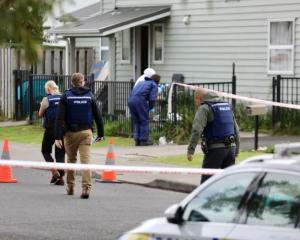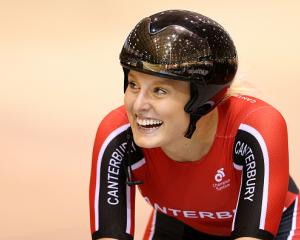
The 25 lakes, rivers and beaches have been graded by Environment Canterbury as unsuitable for swimming. This compares to 21 sites last year.
The grading was based on the results of regular water quality tests from the last five years and will be published on the Land, Air, Water Aotearoa (LAWA) website this weekend.
It focused mainly on the levels of bacteria present in the water tests, and the risk it posed to people's health.
Areas marked excellent meant there was less than 1 per cent risk of getting sick from contact with the water, while unsuitable sites had 10 per cent or higher risk of illness.
Of the 103 listed test sites:
- 14 were given an excellent grade.
- 30 were given a good grade.
- 31 were given a fair grade.
- 25 were not suitable for swimming.
- Three had insufficient data.
Nearly half of the locations on Banks Peninsula have been graded unswimmable, including five out of eight sites in Whakaraupō / Lyttelton Harbour.
Akaroa beach, French Bay, is one location where swimming is not allowed due to the elevated risk to human health risk from contact with the water.
ECan, Te Whatu Ora Waitaha and Christchurch City Council launched an investigation earlier this year to address the harbour's poor water quality.
It found human and animal waste was present in half of the 22 tests analysed.
They were collected from 18 sites in Whakaraupō / Lyttelton Harbour, from Corsair Bay to Purau.
Ahead of summer, the three local authorities plan to drop fliers in local residents' mailboxes, asking for their help to get the beaches swimmable again.
"Over the last few years, water quality in Whakaraupō / Lyttelton Harbour has got worse. Recent testing in the harbour has shown faecal contamination in many of the bays. This poses a risk to human health," the letter began.
"Testing shows that the contamination is coming from land sources with the worst pollution occurring closest to shore and after rainfall events. There have also been cases of unexplained poor results during dry spells."
It asked people to:
- Report any suspected sewage leaks or overflows to Christchurch City Council on 0800 800 169.
- Check any septic tanks or aerated wastewater treatment systems for leaks and get them regularly serviced by a qualified contractor.
- Make sure roof downpipes are not flowing into the wastewater system.
- Always pick up dog poo.
- Always use toilets.
Before swimming, gathering food or heading out on the water, the flyer said people should check the LAWA website for the best spots.
"Avoid swimming for 48 hours after rainfall to reduce the risk of being exposed to contamination," it said.
"If you become sick after contact with the water, please report it to your GP. This helps us track any illness being caused by exposure to water bodies and also ensures you get the right treatment."
ECan's Dr Shirley Hayward said water quality at sites across the region varied year-to-year for a number of reasons, including the climate. She said there were some telltale signs that water was not suitable to swim in.
"General guidance is if the water looks murky, turbid or discoloured, or it doesn't smell good, it's best to avoid going swimming in it," she said.
"The problem we have is sometimes the water can look really clear, but it still poses a health risk because of bacterial presence, so that's where we encourage people to go to LAWA to check that data before swimming."
Hayward said water would be tested weekly at the sites the council monitors over summer.
- Check where you can and cannot swim here.












